LETTA MBULU / “Let’s Go Dancing/You’ve Lost That Loving Feeling”
Covering Joan Armatrading is damn near impossible! When you first hear her songs, it sounds like it would be easy. They are so melodic. They tell such good stories. But getting them right is fiendishly difficult.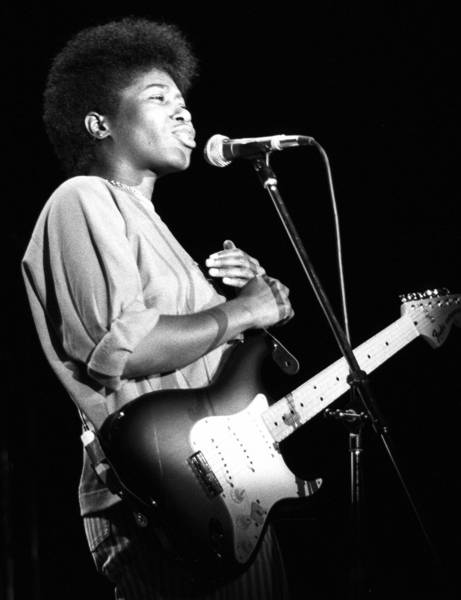
Armatrading, first of all, takes away the crutch of recurring end rhymes. There is no word to hit that sounds like a preceding word. As a vocalist you are set adrift. Where do you place your emphasis? Second, she writes across the bar lines, and to tell the story well, you find yourself coming in or ending up on off-beats, and that’s a little different than the way most popular music is written. Third, Joan has this wide-ranging voice, from a dark bottom to a clear falsetto, and sort of like jazz saxophonist Eric Dolphy, she is adept at jumping wide intervals with ease that most other vocalists just don’t even try to hurdle.
So here we go with some covers compared to Joan’s versions.
Oh, yeah, one other thing. For many folk, their best vocal work is done on the front side of their careers, but Joan is Joan and in 2003 she recorded while on an American tour. Here she is singing songs she’s been singing for up to thirty years, plus she is working in an unorthodox trio format: Joan on acoustic & electric guitars; Spencer Cozens on keyboards; and Gary Foote on drums, sax and flute. You’ve got to be crazy to use a trio like that for a concert tour. Crazy.
First up is “Let’s Go Dancing” from the 1975 album Back To The Night. It’s one of those doe-eyed, “I’m in love with someone who is oblivious to me” songs. But what distinguishes Joan’s composition is the little caveat she tosses in amidst the sweet supplications. The character acknowledges: “Feel in my mind / you want me / but some friend told you / I’m no good.” There is no false outrage in the assertion, which leads us to consider maybe there is some truth to what the “friend” has advised. This is a distinguishing and distinguished Armatrading trademark. She makes logic seem simultaneously important and trivial.
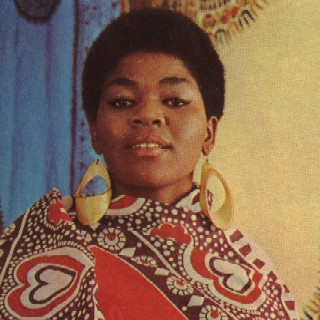
South African songtress Letta Mbulu covers the song and were it not an Armatrading song, I would say that Letta’s version is stronger. But for all her strengths as a vocalist with both a beautiful voice and a beautiful style of singing, Letta avoids dealing with the complexity of the song by dropping the “no good” section. Now, it’s merely a plea to get together with none of the undercurrent of danger implicit in the original lyric.
Letta’s version is, however, not without sophistication, but it is a sophistication in the arrangement and not in the reading of the lyric. Two songs are merged, flowing from one to the other, over a Quincy Jones-inspired riff—Letta was the featured vocalist for the African sections of the Roots soundtrack composed by Quincy Jones. I really, really like what Letta does as a musician, and hence I select it as the feature cover, but as much as I like it, I have to admit it misses the deeptitude of the original even though it has a hip sound.

Next up is a signature song. Keisha White’s version of “The Weakness In Me” hits all of the right narrative elements. Check out her video for “The Weakness In Me,” the visual story is extremely effective.
Ms. White is a 19-year-old London soul artist who wants to bring back the art of singing. Unfortunately, she models herself on the woo-wooing and melisma of the current crop of soul singers, most of whom artificially worry the notes without any hint of subtlety or control. The end result is Negro melodrama—over-singing and raucous shouting as if grandstanding was the goal and louder was better. I do not think Ms. White is bad, but unfortunately her over-emphasizing gospel techniques runs counter to a jazz-based approach, which approach is the standard for interpreting modern standards.
Whether you consider Billie Holiday or Frank Sinatra, Lou Rawls or Tony Bennett, Al Jarreau or someone younger such as Will Downing or Kevin Mahogany, all of these folk use jazz techniques to enhance their vocal styles and effectiveness. When you hear Joan’s reading of the song, there is no comparison. Of course, as acknowledged earlier, we are also dealing with lyrics that are pure poetry. Check this:
Feeling guilty. Worried.
Waking from tormented sleep.
This old love has me bound
But the new love cuts deep.
If I choose now
I’ll lose out.
One of you has to fall
And I need you. And you.
Why do you come here
When you know I’ve got troubles enough?
Why do you call me
When you know I can’t answer the phone?
Make me lie
When I don’t want to
And make someone else
Some kind of an unknowing fool.
You make me stay
When I should not.
Are you so strong
Or is all the weakness in me?

“Save Me” is another signature Joan song and Indian vocalist Susheela Raman has both the voice and the sensibility to give a convincing reading of Armatrading’s classic song. Begging songs are a staple within the genre of romantic ballads and this is perhaps one of the most sophisticated begs you will ever hear. Susheela does a wonderful dusky version including a held note at the end that crackles with pain. I like it.
But I love Joan’s version from the 2003 Live DVD. From the opening note, there is an element of utter despair embodied in Joan’s gut wrenching interpretation—this is one of those songs where she jumps back and forth between the bottom and the top of her voice, often times within the middle of a phrase.
Of the selections included here, I believe Susheela is the best precisely because she is consciously working at merging cultures and therefore is more concerned with discovery than recreation of a particular pre-existing style. Here is a short autobiographical statement from this inspiring vocalist:
I was born in London in 1973 to South Indian parents. My family moved to Australia when I was very young and were eager to keep our Tamil culture alive. I grew up singing South Indian classical music and began giving recitals at an early age. As a teenager, I branched out into more blues-based music, which demanded quite different voice techniques. The question, then, was how to bring these streams together. In 1995, I went to India to study with Shruti Sadolikar, one of the greatest living Hindustani vocalists. This was a challenging experience as I had to let go of what I thought I knew and find a new, more insightful approach to my craft.
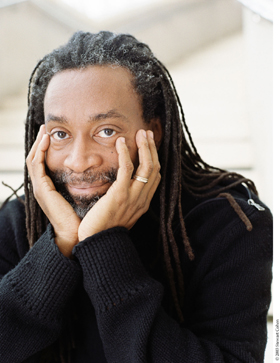
I include “Opportunity” by Bobby McFerrin, who displays his vocal chops at the expense of clearly delivering the narrative, sort of like Keisha White did. And similar to Letta Mbulu, McFerrin drops key words in the lyric when he misses the words “eyes of innocence” in the second verse about dealing with the cop. Part of the problem is that Joan’s stories are so strong and so succintly written that if you miss even a word or two, you lose an important part of the story. And again, because there are no regular rhymes to rely on, overlooking a key phrase is both easy to do and disastrous in terms of projecting the meaning of the song.
We end the Covers with “Love And Affection,” Ms. Armatrading’s best-known song. Again, it seems on the surface to be an easy song to sing, but no, once again there are subtleties that trip up the average vocalist. Going for the easy histrionics is exactly the wrong thing to do to capture the emotional fragility of a person who has good friends but who bemoans the lack of a lover.
The original from the 1976 self-titled album is a classic not only as a composition, but the arrangement is also definitive. So much so, that both the cover by Courtney Pine and the live version are based on the original right down to the saxophone solo and the strings-voiced counterpoint.
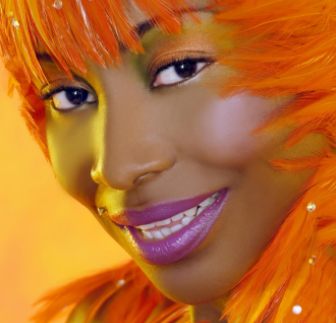
The vocalist on Pine’s cover is Kele Le Roc, a young Londoner born of Jamaican parents whose first brush with success was dulled by a bad recording contract that took her three years to escape. So even though she won two Mobo (akin to the British Grammy), she is not well known on the current scene. She has a memorable voice and excellent control. Like Keisha White, Kele's take is a bit too contemporary-R&B for my tastes, but there is no doubt the young lady can sing. The real problem is that most of these vocalists approach Joan Armatrading songs as though they were gospel-based and that’s simply not the case. Although a gospel approach might work if done with sensitivity, unfortunately most of the interpretations, Kele’s included, tend toward excess when the songs require understatement to be totally effective.
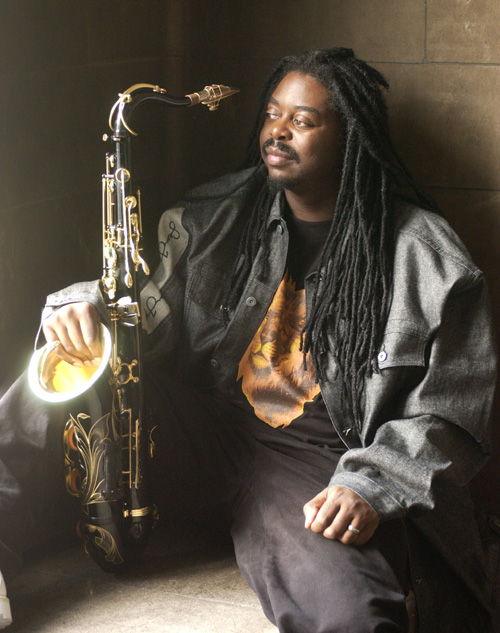
Saxophonist Courtney Pine even submerges his considerable talent within the mix. His saxophone solo seems a mere afterthought rather than an integral element in the song’s development. In fact if you compare Pine’s solo to Gary Foote’s solo, Gary’s work is the better of the two even though there is no doubt that Pine is one of the most talented saxsophonists working today.
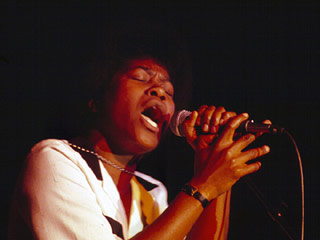
Listen to Joan’s power trio version. I don’t believe it’s that the other singers can’t sing or that Joan is so much better than them in terms of raw talent. I think Joan is Joan. Joan has developed her own approach, crafted it based on hard determination to make her own way in the world. She sounds like no one other than Joan Armatrading. The mannerisms and trademarks are uniquely her own. If she has clichés, they are her own clichés.
Joan reminds me of Thelonious Monk as both an inimitable pianist as well as an architect of modern music. She is a singular voice who is compelling as a vocalist and utterly masterful as a composer. I can think of few other popular music artists in her league as either a vocalist or a composer. Like Monk, she is not only one of a kind, Joan Armatrading is a category unto herself.
—Kalamu ya Salaam
Close, but not quite
Listening to these covers, the thought that keeps coming to my mind is 'close, but not quite.' McFerrin has the voice and the technique, but his vocal stylings don't work for this song. He speeds through the lyrics of "Opportunity" so quickly, that the dry humor and sinister wit of Joan's crime narrative is wasted.
The young lady who attempts "The Weakness In Me" may or may not have ever been involved in the situation Joan therein describes, but her musical (if not personal) maturity isn't sufficient to communicate the subtle depth of the the characters' pathos.
Letta Mbulu's "Let's Go Dancing" isn't terrible, I'll admit that. But it doesn't even approach Joan's version, one of the (bitter)sweeetest love songs I know. Letta phrases her words so carefully and the band handles the melody in such an obvious, ham-handed fashion, that the gorgeousness of the chord changes is lost. (Whenever Joan shifts to the chord that goes with the "I can see in your eyes" line, something in me breaks to pieces.) And what's with the whole Righteous Brothers thing? I'm not feeling that at all.
The Susheela Raman take on "Save Me" is the one cover that I feel measures up to Joan's intentions. It's the only version that seems to inhabit the same world as the one created by the original. Listen to the way Susheela's volume and pitch rise when she sings "You STAAAAAND on the bank...." Susheela understands what Joan was getting at there. She knows the metaphor. True, Susheela's voice isn't as suited to the material as is Joan's (it occurs to me that Joan was also expert at writing melodies that favor her unique vocal style), but Susheela's deliberate pacing and deep, warm tone are more than adequate to communicate the loneliness, desperation and uncertainty of Joan's lyrics.
Above all, what these covers demonstrate is how unusual and challenging Joan's material is. At first blush, Joan's songs seem to be simple pop tunes. Lyrically detailed, yes, but melodically and structurally simple. It's only when we hear other artists attempt to recreate Joan's work that the quirks of her melodies, the subtlety of lyrics, the precise pacing of her vocal rhythms and the complexities of her song structure all become apparent. Simply put, Joan is the most underrated artist of her time—a fiercely talented songwriter, a unique and affecting vocalist and a virtual poet of pop lyric-writing. The consistent difficulty other artists have in covering Joan's work helps to illustrate all of these distinctions.
—Mtume ya Salaam
This entry was posted on Sunday, April 30th, 2006 at 12:15 am and is filed under Cover. You can follow any responses to this entry through the RSS 2.0 feed. You can leave a response, or trackback from your own site.
4 Responses to “LETTA MBULU / “Let’s Go Dancing/You’ve Lost That Loving Feeling””
May 1st, 2006 at 11:01 am
What I like about this part of breath of life is meeting all these unknown and known vocalists/musicians in the context of the featured vocalist/musician. The diverse difference and varied variety is such a thrill!
May 3rd, 2006 at 9:20 am
I love Susheela’s version of ‘Save Me’…. perhaps more than Armatrading’s. Susheela’s voice is so warm and full…. I feel it. While the desperate need is apparent in the original version, it just does not hit me the same way. But to be completely honest, Armatrading has always been hit or miss for me. Either I am truly and whole-heartedly feeling one of her tracks so much so that it is on repeat on my CD player or I’m just not feeling it.
May 3rd, 2006 at 12:48 pm
It is my personal consideration that confining the single, You’ve Lost That Loving Feeling, from the recording, There’s Music In The Air, by Letta Mbulu, to contemporary status does a disservice to a really wonderful recording. Black America in the seventies saw Letta taking her place amongst an impressive line of musicians from south Africa who cracked, what was then, a much wider rotation in Black radio in the u.s. Hugh Masekela’s Grazing In The Grass, which is an instrumental and Miriam Makeba’s Pata Pata, composed of lyrics sung in both Xhosa and English, were phenomenal breakthroughs in bridging the Atlantic. These songs and musicians prepared our ears and consciousness for music and cultures that, while being somewhat different from our own, still rang with an air of familiarity. The title cut, There’s Music In The Air, was a bonafied hit and those of us buying the album for that one cut were pleasantly surprised as we let the needle ride. Letta’s voice is in the tradition of great South African vocalists. There is no pretense in her vibrato. Letta’s approach is diaphragmatic yet finishes with a head sound as clear as a herald trumpet. Her delicate tone masks an inner resolve that sustaines and supports her intonation thoughout each line. This is the type of breath control that jazz and opera singers practice years to master; check Sarah Vaughn and Jesse Norman. It is truly amazing to have heard, at a time when apartheid was at it’s zenith, Mbulu suggest ‘we look for love in the music’. That, in itself, is enough to make anybody want freedom now! Nkosi Sekelele Ninth Ward, New Orleans East and the rest of apartheid New Orleans. To quote half a haiku: ‘I believe in Black people.’
i hear you
youngblood, i hear where you’re coming from and i agree with your assesment of ms. mbulu as a vocalist and a political force. beyond the connections and implications you cited, there is all the work she, her husband caiphus semenya, and hugh masekela did in los angeles which included teaching south african culture and working with political organizations. nevertheless, in this case, we were specifically referencing a joan armatrading song that letta sang, hence we only spoke about that contribution and not about letta mbulu’s career as a whole. i give thanx that you brought it up.
—kalamu ya salaam
November 10th, 2008 at 1:39 pm
I have never really listened to Joan Armatrading but I plan to because if she can compaired with Letta Mbulu and even given credit for doing better than Letta on that song I must hear it.
I first became aware of Letta in the early ’70s but have loved her voice and just about everything else about her ever sence
Leave a Reply
| top |